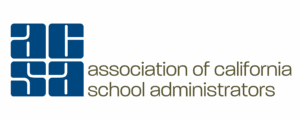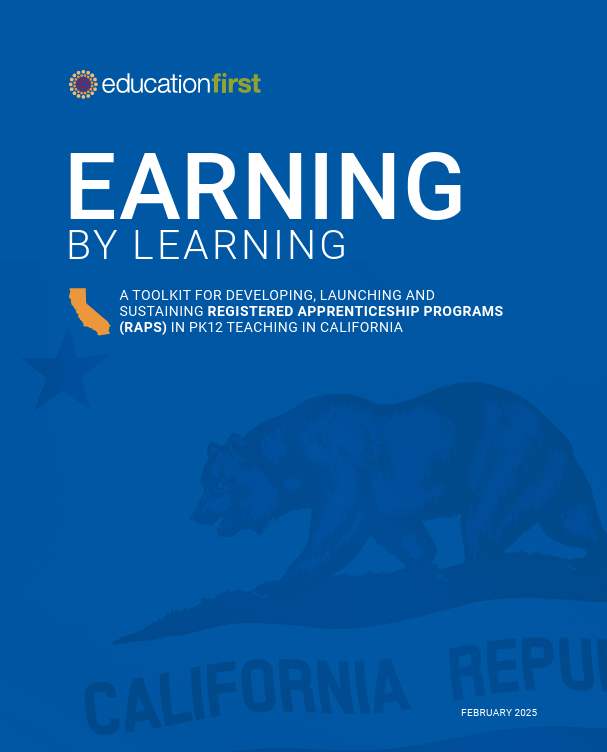By Richard Lee Colvin for NAESP, an ACSA Affiliate
When Ryan Daniel became principal of Chillum Elementary School in 2017, she knew the school was located in a subsidized housing complex and that English was a second language for most of its students. She was also aware that the person she was replacing at the 360-student school in Hyattsville, Maryland, had been in the role for 19 years.
“I knew that change would be difficult for some and welcomed by others, and that there was work that had been started, but that the school yearned for new energy, new life, and fresh ideas,” says Daniel.
Rather than issuing directives, however, Daniel put her energies into ending the isolation some teachers felt and emphasizing teamwork.
“Building relationships is one of my biggest strengths, and I knew that in order for us to do this work, we needed to collaborate,” she says. “Change is hard and messy in the beginning, but if we stay close to the goals that we create as a team, we can help everyone along the way.”
Cameron Millspaugh, who in 2015 was a first-time principal at Cool Spring Elementary School, located a few miles north of Chillum in Adelphi, Maryland, faced similar challenges. As a result of teachers who chose to leave rather than adjust to a new principal, he also had a number of staff vacancies to fill. Like Daniel, Millspaugh made building relationships with and among his staff a top priority.
“I told the staff that we had to focus on the people, not the work, and not the stress of the work,” Millspaugh says. “We had to work together, whether or not we taught children, and build camaraderie around the idea that everything we do is intended to benefit the children we serve and the community around us.”
Districtwide effort
It wasn’t by happenstance that both of these new principals recognized that a supportive, professional, and collaborative school culture is key to academic success. Both Chillum and Cool Spring are part of Prince George’s County Public Schools, a district that, with grants from The Wallace Foundation, has put in place a multidimensional training, mentoring, and hiring system to ensure its principals are steeped in evidence-based leadership practices. One of those practices, researchers have found, is that effective principals intentionally create a school culture that allows teachers and students to concentrate on learning and doing their best work.
A principal of a school serving mostly disadvantaged students has one of the most difficult jobs in education. But, too often, the only preparation aspiring principals get is university classes that cover mainly the administrative and legal aspects of the job, not the critical work they do to improve academic achievement and create an instructionally supportive culture.
Typically, assistant principals are put in charge of discipline rather than working with teachers on their practice. That’s not the case in Prince George’s County schools. There, assistant principals participate in an academy that helps them learn to be instructional leaders, coach teachers, and make good use of data. Once they are on the job, specially trained supervisors coach and mentor them, helping them set and reach academic goals and establish a positive culture.
“We want all our principals to have a love of learning, and we want them to develop a school culture that is inclusive and—for students, their families, and staff—feels like they are all part of a family,” says Monique Davis, deputy superintendent of Prince George’s County schools.
Always in motion
For Daniel, whose school is too small to justify having an assistant principal, that means being constantly on the move. Wearing comfortable flats, she is posted at the school’s entrance, bantering with students and teachers as they arrive. Smiling students form brief scrums around her for hugs. She asks an arriving teacher who had been out sick the day before how she is feeling.
Communication tip
- Principal Ryan Daniel records weekly updates on YouTube and sends teachers the link. It’s faster than writing and adds a personal touch.
Daniel’s day consists of a flurry of meetings and classroom observations. She doesn’t stop for lunch; instead, she stocks her purse with pretzels, chocolate, an energy bar, and a bagel and cream cheese, and she nibbles on them throughout the day.
Opportunities to collaborate
All Prince George’s County schools use the Data Wise process, developed at the Harvard Graduate School of Education as a way to make discussions about data and the implications for instruction more productive. The year before Daniel became principal of Chillum, the school’s leaders decided that improving math instruction would be the school’s top priority. Teachers were expected to comply, yet they had not been a part of that process, despite wanting to be involved.
In response, Daniel hired a data coach to help teachers learn how to analyze their students’ progress and how to adjust their instruction appropriately. Daniel also set up professional development and planning sessions. Teachers asked for more time to work directly with one another, so Daniel converted every other session into an opportunity for teachers to collaborate on instructional issues.
Whiteboard wisdom
- A peek at Principal Ryan Daniel’s whiteboard reveals the following questions to ask yourself:
- How can I be helpful?
- How can I be a hindrance?
- How can I make things go well?
Meetings allow Daniel to talk with teachers about two of her biggest concerns—building up students’ inventory of academic language and increasing the level of rigor. The relationships she has developed with teachers and the trust they place in her enable Daniel to raise those issues and work with teachers on techniques for addressing them. Evidence of that trust is that teachers asked Daniel to observe them informally, and give them feedback to help them improve. Those instructional conversations are two-way. “I teach my teachers to push back and to be facilitators of their own learning,” she says. “That helps me release control.”
Lorraine Joseph, a lead teacher at Chillum, has worked at the school for 16 years, and she sees a big difference. “It’s like we’re all in this together; it’s not like she’s ahead and yelling out orders,” Joseph says.
Daniel is also clear about what she wants to see instructionally. “She poses questions to us and encourages us to delve deeper and provide evidence for what we’re saying,” Joseph adds.
Associate Superintendent Helen Coley says the difference Daniel is making at Chillum is instantly noticeable. “Everyone seems to be on fire with excitement,” she says. “It’s every day, and it’s such a good feeling. The focus on school culture, on instruction, on data, is there all the time.”
Changing the game for students
Teachers’ enthusiasm and commitment to improvement are also evident at Cool Spring, which serves nearly 900 students, about two-thirds of whom are English-language learners. At the beginning of Millspaugh’s second year there, teachers voted to add “completing the circuit” to the previous year’s theme, enlarging the concept of teamwork to include community partnerships that would bring students more services and opportunities.
Relationship-building tip
- Principal Cameron Millspaugh saw something occur at a Back to School Night that bothered him, so he let the teacher involved know about it. A day later, he visited the teacher in her classroom. “He asked me how I was feeling,” the teacher relates. “He explained to me what had occurred and why it bothered him. I appreciated that.”
In Millspaugh’s third year as principal, teachers agreed to be “game-changers” for their students. As a result, the new programs proposed or embraced by teachers include a kindergarten dual-language immersion program, a newcomer program for students who don’t yet speak English, and an arts integration program.
“The way you build capacity is to go out on a limb and take risks,” he says. “Failure is OK, but don’t stop with failure.”
Two of Millspaugh’s biggest academic concerns are similar to those at Chillum: the level of rigor and English-language learners’ need for more academic language. “We want to prepare our students to be college- and career-ready,” he says. “Proficiency on the state assessment is not our ceiling; it is our floor.”
A district-level analysis of academic trends revealed that, for students such as those at Cool Spring, second grade is a particularly important step on the ladder to long-range academic success. Millspaugh and his team looked at their own data and realized that the first-grade teachers needed more support to get their students ready for second grade, and that second-grade teachers needed to know more about third-grade expectations.
Giving teachers what they need
For Cool Spring, the solution was to encourage teachers in those three grades to share challenges and strategies with one another, and to provide them with whatever resources and professional development they needed.
Laura Corley-McKan, who has taught for 20 years (including four at Cool Spring), appreciates the support. She says teachers have had opportunities to learn how to do guided reading with greater fidelity, and that they have plenty of books and other resources. She was on jury duty for five weeks, so Millspaugh arranged for a qualified long-term substitute to fill in, and the other second-grade teachers also helped out. When she returned, Corley-McKan was pleased to see that her students had continued to make progress.
Millspaugh has helped teachers gain confidence and be optimistic. “We may or may not be there yet, but you have to have the attitude that you can do it, even though it’s hard,” Corley-McKan says.
Staci Sendgikoski, another second-grade teacher at Cool Spring, is only in her second year in the classroom. Even before she started, other teachers came to ask her how they could help. Within a few weeks, Millspaugh “popped in to ask me how I was, and what he could do for me.”
Early on, Sendgikoski realized she needed to know more about her students, most of whom are immigrants. She mentioned that to Millspaugh, and the first week of school he offered her a useful learning opportunity that helped her understand immigration, adjust her instruction, and communicate with parents.
One of Millspaugh’s goals at Cool Spring is to create what he calls “a coaching mindset in the building.” He and other members of the instructional team work one-on-one for a whole week with teachers who ask for help or who, in the team’s judgment, need the extra assistance. He also provides teachers with chances to lead, encouraging them to conduct professional development sessions and share their knowledge.
Millspaugh taught high school-level mathematics at a middle school for 13 years before becoming an assistant principal, so he welcomes the opportunity to help Cool Spring’s elementary-age students develop their math skills. However, Millspaugh also recognizes that he knows relatively little about literacy instruction. So, in the collaborative spirit he has cultivated, he turns to his teachers for help.
“I’m willing to admit when I don’t know something,” he says. “I’ll go into a classroom with teachers and have them point out what I need to know.”




































